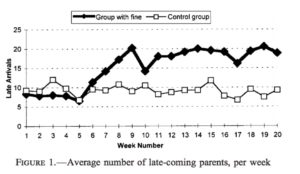You aim for bottom-line impact with your customer-centric strategy? Get to know the 10 boardroom metrics to have on your radar.
- #1 Customer Lifetime Value
- #2 Customer Effort Score
- #3 Monthly Recurring Revenue
- #4 Customer Satisfaction Score
- #5 Net Promoter Score
- #6 Average Order Value
- #7 Revenue from returning customers
- #8 Closing rate
- #9 Customer Retention rate
- #10 Customer Churn rate
Find out in this article:
- Why you should monitor those 10 metrics, to evaluate the impacts of your customer strategy.
- Which (sometimes disturbing) questions you should ask yourself about the underlying performance factors.
- What are the pro’s and con’s of each of those metrics.
#1 Customer Lifetime Value (CLV)
The question
Are you aware of the actual value of your customers to your business?
The metric
Customer Lifetime Value = customer value x average customer lifespan.
Next to the average value of sales, customer value accounts for: acquisition costs, operating expenses and costs to produce the goods or services.
The pro’s
Customer Lifetime Value, also called Lifetime value (LTV), helps you to prioritise and tailor marketing, as well as your operational efforts, to maximise future return on investment.
It points the way towards successful customer acquisition and retention strategies per customer segment.
It switches the dynamics in your organisation to a focus on the customer, by forcing the business to examine their accomplishments with their customers.
The con’s
This metric is not relevant if hard data (eg. turnover, acquisition cost, customer service cost, …) are not available.
The future is difficult to predict, even with the best data at your disposal. Customer lifetime value (CLV) remains a predictive metric.
#2 Customer Effort Score (CES)
The question
Do you know exactly where it hurts?
Do you capture the true needs behind the cry of pain of your customers?
The metric
Customer Effort Score is the score you get when asking your customers how easy it was to interact with you. (on a scale of 1 to 7, from 1=very hard to 7=very easy).
Measuring the efforts required by a customer to interact with the company, is mainly used to evaluate the quality of an interaction and to estimate customer loyalty.
The pro’s
The Customer Effort Score metric provides a critical insight on the quality of a process or a service. It is objective and very reactive, considering that it is measured just at the end of an interaction.
It is complementary to other metrics, such as NPS or CSAT that we will introduce later. It is closely linked to satisfaction, loyalty, and generally to speaking customer experience.
The con’s
The Customer Effort Score does not provide much insight when the metric is not followed-up over time. The trend gives more qualitative insights than the absolute value.
Collecting additional data (qualitative) and information on customer sentiment is necessary to complement information from CES.
#3 Monthly Recurring Revenue (MRR)
The question
How impactful is your customer strategy?
The metric
Monthly Recurring Revenue = expected recurring revenue per customer per month x number of customers.
The pro’s
The Monthly Recurring Revenue is an ‘advanced warning’ metric: it helps you to understand the drivers of revenue growth and to identify opportunities to optimise your customer strategy. For example: improving acquisition, retention, pricing strategy.
It strongly supports budgeting/financial forecasting. And is useful to validate the relevance of a decision taken.
The con’s
For business models other than subscription -based models, the Monthly Recurrent Revenue metric can be more difficult to track.
We do not recommend this as a stand alone metric. You get better insights when combining MRR with your customer acquisition cost. And when correlating with your Net Promoter Score.
#4 Customer Satisfaction Score (CSC)
The question
How can you reduce friction points in your customer journey? What steps can you take to streamline your processes?
The metric
Customer satisfaction score = the score achieved when asking your customers how satisfied they are on a scale of 0 to 10.
It measures ‘in real time’ how well commitments are delivered to customers.
The pro’s
This metric gives valuable insight on customer’s overall experience with the products and/or services that you provide.
The Customer Satisfaction Score gives you real-time feedback on the impact of your actions. It is easy to implement, easy to understand for your customers. And thus more likely to provide multiple data points.
The con’s
The Customer Satisfaction Score does not provide you immediately with actionable information. And it requires a qualitative follow-up question to fully understand the score given.
Capturing verbatims is important to better understand where to prioritise your actions.
#5 Net Promotor Score (NPS)
The question
How many of your customers claim to be advocating for you?
The metric
Scores from 0 to 10.
NPS = % Promoters – % Detractors. It is calculated with:
- Promoters: respondents who scored 9 or 10.
- Passives: respondents who scored 7 or 8.
- Detractors: respondents who below 6.
The pro’s
Generally used and easily recognized across industries.
The same question can be used for customers and staff.
The con’s
The metric is not “valid”: people who claim to recommend you are not necessarily doing so in reality.
The claims of a causal link to growth stronger than CSAT have been proven wrong.
#6 Average Order Value (AOV)
The question
Is your customer strategy actively leveraging cross- and upselling opportunities?
The metric
The average amount spent every time a customer places an order.
AOV = total revenue/amount of orders placed
The pro’s
This metric helps to assess which strategies are driving your customers to spend more.
It also puts the focus on ways to increase the profitability of your existing customer base.
The con’s
The average order value metric can be affected by a few extremely high or extremely low value orders.
It focuses on the monetary value of individual transactions, not on the long-term customer retention and loyalty.
#7 Revenue from returning customers (%)
The question
Are your processes nurturing customer loyalty? Does your business model foster repeat business?
The metric
Revenue from returning customers = a percentage of total revenue
The pro’s
Comparing revenue generated by new customers to the cost of acquiring those customers can provide insights into the effectiveness of efforts. It helps tracking customer loyalty and identify opportunities to improve customer retention.
The con’s
Revenue from returning customers does not take into account the frequency or the volume of purchases: a high number of returning customers may not necessarily lead to sustained revenue growth if they make only smaller purchases.
The relevance of this metric may vary depending on industry and business model.
#8 Close Rate (%)
The question
Are you presenting the right value proposition to your sales leads?
The metric
Within a period, what’s the percentage of conversion of new customers over the total number of leads generated.
The pro’s
A drop in close rate can be an opportunity to reassess customer expectations. This metric is both tactical (performance of sales reps) and strategic (relevance of your value proposition).
The con’s
A robust controlling is needed if you want to capture every lead your organization generates. This metric isn’t always relevant for business models with long sales cycles, such as B2B companies with high-value products or services.
#9 Customer Retention rate
The question
Are you creating sustainable business growth by keeping your customers?
The metric
[(E-N)/S]x100
- E = # of customers at the end of period
- N = # of customers gained during the period
- S =# of customers at the start of the period
The pro’s
The customer retention rate directly affects customer lifetime value.
Better retention means more reliability on repeat purchases, and thus increased consistency in revenue streams.
The con’s
This metric (CRR) may be influenced by factors outside the business’s control (eg. market conditions, competitive forces).
Relying on customer retention rate only, might overlook the importance of acquiring new customers.
#10 Customer churn rate
The question
Are you removing the right pain points through process review and optimisation (e.g. complaint management,…) ?
The metric
Customer churn rate = number of lost customers over the total number of customers (at the beginning of the period).
The pro’s
Customer churn rate is a quantitative metric that helps budgeting and forecasting.
Tracking this metric motivates an organisation to understand and address crucial customer pain points.
The con’s
It is a post-mortem metric: you capture insight after the fact. Therefor, it is more useful if followed-up over a period of time: reacting to the trend is more important than capturing its spot value.
The full series of Boardroom metrics to monitor your customer strategy
#1 Customer Lifetime Value
#2 Customer Effort Score
#3 Monthly Recurring Revenue
#4 Customer Satisfaction Score
#5 Net Promoter Score
#6 Average Order Value
#7 Revenue from returning customers
#8 Closing rate
#9 Customer Retention rate
#10 Customer Churn rate
















